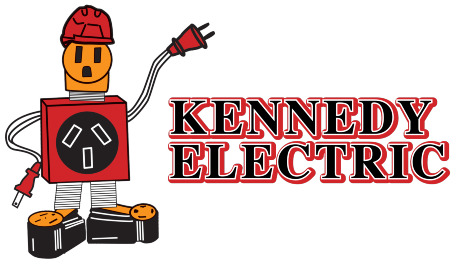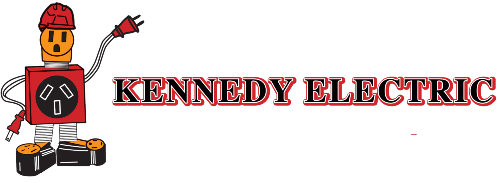Types of Appliance Outlets: Understanding the Right Outlet for Every Home Appliance
Whether you’re upgrading your kitchen, remodeling an older home, or simply curious about what type of outlet for refrigerator installations is best, here’s how professionals approach it.
Every home runs on outlets. They’re the small, often overlooked connectors that quietly power everything from your refrigerator to your favorite coffee maker. Most people don’t think twice about plugging something in—until a circuit trips or an outlet gives up the ghost. Then, suddenly, the question becomes: which outlet belongs where?
Understanding the different types of electrical outlets isn’t just about convenience; it’s about safety, performance, and keeping your appliances running efficiently. Not all appliances draw the same amount of power, and not every outlet is equipped to handle the load. Whether you’re upgrading your kitchen, remodeling an older home, or simply curious about what type of outlet for refrigerator installations is best, here’s how professionals approach it.
The Evolution of Outlets in Modern Homes
Walk into a new home today and you’ll see a mix of standard, smart, and specialty outlets scattered throughout. Compare that to a home built a few decades ago, and you’ll notice how much has changed. Old two-prong outlets have mostly vanished, replaced by grounded three-prong versions that meet modern electrical codes. Kitchens now feature GFCI outlets near sinks, and many homeowners are requesting USB or smart outlets to keep up with connected living.
Each design serves a specific purpose—and when appropriately matched with appliances, it keeps your electrical system balanced, efficient, and safe.
The Outdated Two-Prong 15A 120V Outlet
Once the norm, the two-prong 15A 120V outlet is now the electrical equivalent of an antique. Without a grounding slot, these outlets leave appliances and homeowners more vulnerable to electrical shocks. You can still find them in older homes, often tucked behind furniture or in rooms that haven’t been updated in years.
While they might still function, two-prong outlets can’t meet the demands of modern electrical loads. Appliances that require grounding, such as microwaves or refrigerators, should never be connected to them. For homeowners in older neighborhoods or historic districts, replacing these outdated outlets is one of the smartest safety upgrades you can make.
The Dependable Three-Prong 15A 120V Outlet
Enter the grounded three-prong outlet—the modern standard for everyday power needs. These outlets are found in bedrooms, hallways, living rooms, and other spaces where low- to medium-power devices live. Think lamps, phone chargers, fans, and televisions.
What makes this type reliable is its grounding feature. If a fault occurs, the grounding slot provides a safe path for stray electricity, reducing the risk of shock or fire. For light household electronics, this is the perfect outlet. But once you step into appliance territory—like your refrigerator or washing machine—you’ll need something with more power.
The 20A 125V Outlet: Where Strength Meets Stability
When appliances need a little extra muscle, the 20A 125V outlet steps in. You can spot one by the small horizontal notch on one of the slots—a subtle but important design cue. These outlets can safely handle higher electrical demands and are standard in kitchens, laundry rooms, and garages.
A refrigerator outlet, for example, should always be a 20A 125V dedicated connection. Plugging your fridge into a shared 15A circuit can lead to frequent trips or, worse, damage to the appliance’s compressor. The best outlet for refrigerator systems provides steady, consistent power without interruptions.
That’s why professional electricians always install dedicated circuits for major kitchen appliances. It prevents voltage drops and keeps essential systems running, even when other outlets are busy handling smaller tasks.
The 20A 250V Outlet: Designed for Heavy-Duty Work
Some appliances require even more power. Electric ranges, dryers, air conditioners, and large workshop tools rely on 20A 250V outlets. These outlets deliver double the voltage and are designed specifically for high-load equipment.
Unlike standard outlets, which use 120 volts, these 240-volt versions have unique prong configurations and require special wiring. They’re not interchangeable—and they shouldn’t be installed without professional expertise.
If you’re ever unsure which outlet type your appliance needs, don’t guess. The right outlet can mean the difference between years of smooth operation and an expensive repair call.
Safety-Driven Innovation: GFCI and AFCI Outlets
Some outlets do more than deliver power—they protect you from electrical hazards. Two types of protective outlets dominate modern safety standards: GFCI and AFCI.
GFCI (ground fault circuit interrupter) outlets are lifesavers in moisture-prone areas like bathrooms, kitchens, basements, and outdoor spaces. They detect imbalances in electrical flow and instantly cut power to prevent shock. If you notice two buttons labeled “Test” and “Reset,” that’s your GFCI at work.
AFCI (arc fault circuit interrupter) outlets, on the other hand, guard against electrical fires. They sense dangerous arcing—tiny sparks that can occur from damaged or loose wires—and shut down the circuit before trouble starts. Bedrooms, living rooms, and hallways often require AFCI protection under modern electrical codes.
Together, these two outlet types dramatically reduce risk and make your home far safer than older systems ever could.
Matching Plug Types To Appliance Needs
Every appliance plug type has a purpose. Matching them to the correct outlet is essential for performance and safety. A small blender or toaster may draw only a few amps, while a refrigerator or washing machine might pull several times that. Using the wrong outlet doesn’t just underpower an appliance—it can overheat wires and trip breakers.
If you’ve ever asked, “Can my refrigerator use a regular outlet?” The short answer is: not ideally. A dedicated refrigerator plug type verifies steady current and protects the motor from low-voltage conditions.
When planning your electrical layout, electricians account for these power demands room by room. Kitchens, laundry areas, and workshops all require circuits that can handle heavier loads, while bedrooms and offices can safely use standard 15A outlets.
Smart and Specialty Outlets: The Future of Connectivity
Homes today are becoming more connected—and outlets are keeping up. USB-equipped outlets eliminate bulky adapters, allowing direct charging for phones, tablets, and smart devices. Smart outlets take it an additional step further, offering remote control, energy monitoring, and integration with home automation systems.
While a smart outlet might not be necessary for your refrigerator, integrating them elsewhere improves convenience and energy efficiency. For example, you can schedule lights to turn off automatically or monitor power use in real time. It’s the kind of feature that adds value and comfort while keeping your electrical system modern.
Protecting Your Appliances From Power Surges
Power surges can strike anytime, whether from lightning, utility issues, or grid fluctuations. A sudden voltage spike can damage internal appliance components or fry sensitive electronics. That’s why professionals recommend surge protection for every home.
Whole-house surge protectors offer the best defense, but certain appliance wall outlet designs also include built-in surge protection. Installing one for your refrigerator outlet can save you from costly replacements and extend the life of the appliance.
When To Replace or Upgrade Outlets
Outlets age just like anything else. Over time, the materials wear out, and what once worked perfectly can quietly become a safety risk. Knowing when to contact a professional can prevent costly damage or electrical hazards. Watch for these telltale signs:
• The outlet feels warm or hot to the touch.
• You notice a burning odor, smoke, or crackling sounds.
• The outlet or faceplate shows discoloration or burn marks.
• Plugs no longer fit snugly or fall out easily.
• Lights flicker or appliances lose power intermittently.
• You see visible cracks or melted areas around the outlet.
A licensed electrician can test your outlets, assess circuit capacity, and replace any outdated or unsafe connections. It’s a small investment that prevents major electrical issues later on and guarantees your home remains both safe and efficient.
Regional Factors to Consider
Climate, building age, and local electrical codes all influence outlet selection. In coastal or humid regions like Florida, moisture-resistant and corrosion-resistant outlets are critical, especially near kitchens and outdoor spaces. Homes in older neighborhoods often need electrical upgrades to accommodate modern power demands.
Working with local professionals familiar with regional standards makes sure your outlets meet both code and environmental conditions.
Key Takeaways: Choosing Outlets With Confidence
Electrical outlets may be small, but they’re the foundation of a safe and efficient home. Choosing the right outlet for every appliance secures reliable performance, minimizes risk, and keeps everything running smoothly.
Here’s what matters most:
• Replace outdated two-prong outlets with grounded three-prong versions.
• Install a dedicated 20A outlet for refrigerator connections.
• Use GFCI outlets in bathrooms, kitchens, and outdoor areas.
• Protect large appliances with surge protection or dedicated circuits.
• Schedule electrical inspections every few years to keep systems code-compliant.
• Always consult a licensed professional for outlet installation or upgrades.
A professional electrician not only installs outlets safely but also helps plan a system that matches your household’s unique power needs—avoiding overloads, inefficiencies, and costly surprises.
FAQs
What type of outlet should a refrigerator use?
A refrigerator should use a dedicated 20A 125V grounded outlet on its own circuit to verify stable power.
Can I plug a refrigerator into a regular outlet?
You can, but it’s not ideal. Shared 15A outlets can overload easily, leading to performance issues or tripped breakers.
How do I know if my outlets are outdated?
Two-prong outlets, discolored plates, or loose plugs are signs that it’s time for an upgrade.
What’s the difference between GFCI and AFCI outlets?
GFCIs protect against shock in wet areas, while AFCIs prevent electrical fires caused by wiring faults.
Can smart outlets handle heavy appliances?
Most smart outlets are designed for small electronics, not large appliances. Check specifications before use.
Are USB outlets safe for everyday use?
Yes. They’re convenient and safe when installed by a licensed electrician.
Why does my outlet feel warm after using my refrigerator?
This can signal overloading or poor wiring connections—contact a professional immediately.
How often should outlets be inspected?
At least every few years, or sooner if you add new appliances or experience electrical issues.
What’s the safest outlet for a humid climate like Florida?
GFCI outlets with moisture-resistant covers are recommended for humid or coastal regions.
Should every appliance have its own circuit?
Not every appliance, but heavy-load appliances like refrigerators, dryers, and ovens should be on dedicated circuits for safety.
Get top-quality EV charging station installation, outlet and switch installation, Home lighting, and under-cabinet lighting for residential and commercial property owners. We use quality parts and materials and stand behind our workmanship.


